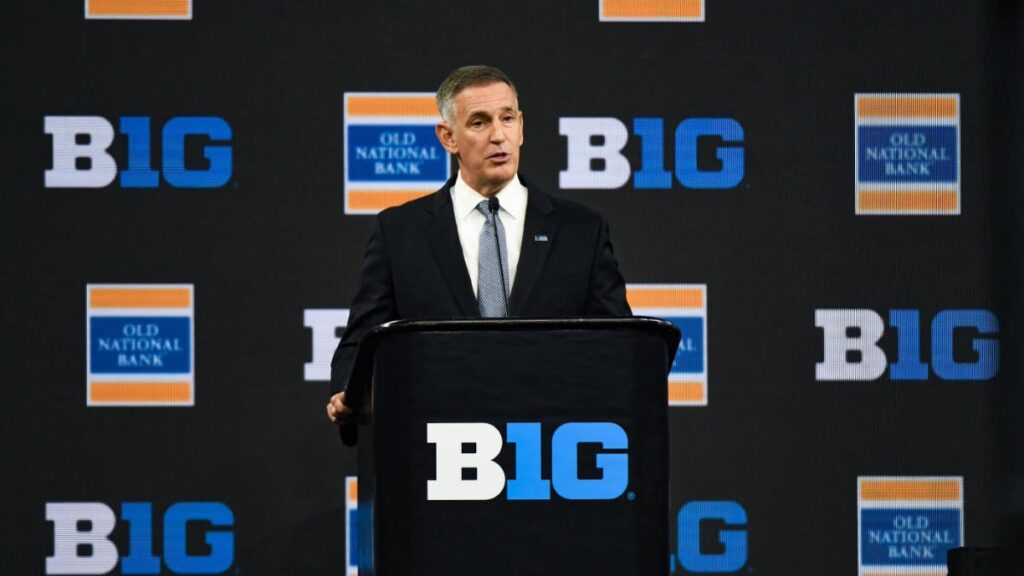The Big Ten and SEC’s current expanded 16-team College Football Playoff proposal for the 2026 season and beyond revolves around access and the belief strength of schedule and regular-season results ultimately trump all other data points for entry.
Big Ten commissioner Tony Pettiti Pettiti told Fox Sports’ Joel Klatt in an interview this week that getting closer to a professional sports model from a postseason standpoint is an obvious goal for his conference, which starts with stressing the importance of conference finish and record in the regular season.
“I want more teams to feel like they’re chasing that opportunity to compete for a national championship,” Pettiti said Monday. “Teams can get hot late in the season. The fact they lose a game early shouldn’t disqualify them. To play more meaningful conference games as late as possible.”
Why the Big Ten, SEC alliance turned sour — and what it means for future College Football Playoff format
Brandon Marcello
The Big Ten has won consecutive national championships following Michigan’s title in 2023 and Ohio State’s last fall.
“It’s a really interesting job, when you’re playing conference games, you’re kind of stone-faced, you’re on the sideline and you can’t indicate any emotion,” Pettiti said. “When you get into these nonconference games, you’re living and dying like the people on campus are. The more we win, apparently the more IQ points you get. All those wins matters (in terms) of my job performance, I guess.”
Ohio State was one of a nation-leading four Big Ten teams to reach the playoff last season and was joined by league champion Oregon along with fellow at-large selections Penn State and Indiana.
“We believe strongly conference record is like the backbone of all that,” Petitti said. “How you play during the season (should) qualify you based off conference record.”
Petitti said the idea of playoff “play-in” games for the Big Ten during conference championship weekend is a way to normalize conference schedules since there are 17 teams in the conference and many do not play each other over a nine-game league slate. It’s another data point, so to speak, for the selection committee to try and grade accordingly and makes their job difficult.
Last fall, many pointed to Indiana’s lack of schedule strength compared to other Power Four teams since the Hoosiers luckily missed many of the Big Ten’s top competition during the regular season and finished without a win over a nationally ranked opponent.
The Big Ten’s preferred playoff model moving forward is a 16-team format with four automatic conference qualifiers, four from the SEC, two from the ACC, two from the Big 12, one Group of Five team and three at-large selections.
“We’ll stipulate the committee does the best job they can. This is not to say the (committee) doesn’t do a good job … they make incredibly difficult decisions based on data,” Pettiti said. “This year in the Big Ten, we’ll crossover — I think we play four Big 12 games, three SEC, three ACC and two Notre Dame (games) … That’s not a lot of conference play among us with a body (of work).
“When you start comparing teams that don’t have a head to head and you have very little data to look at between leagues, that becomes really difficult.”
Pettiti said an out-of-conference loss for a Big Ten elite may affect seeding, but should not affect “access” down the road. He wants to continue to enhance out-of-conference scheduling, like Week 1’s seismic opener pitting Texas at Ohio State.
Klatt said the “baseline” of future college football scheduling should move to an “access-based” playoff model and put less of an emphasis on the selection committee by minimizing outside opinions. A defined path to the playoff increases the number of “meaningful” games and engagement from fanbases deeper into the season.
Read the full article here



